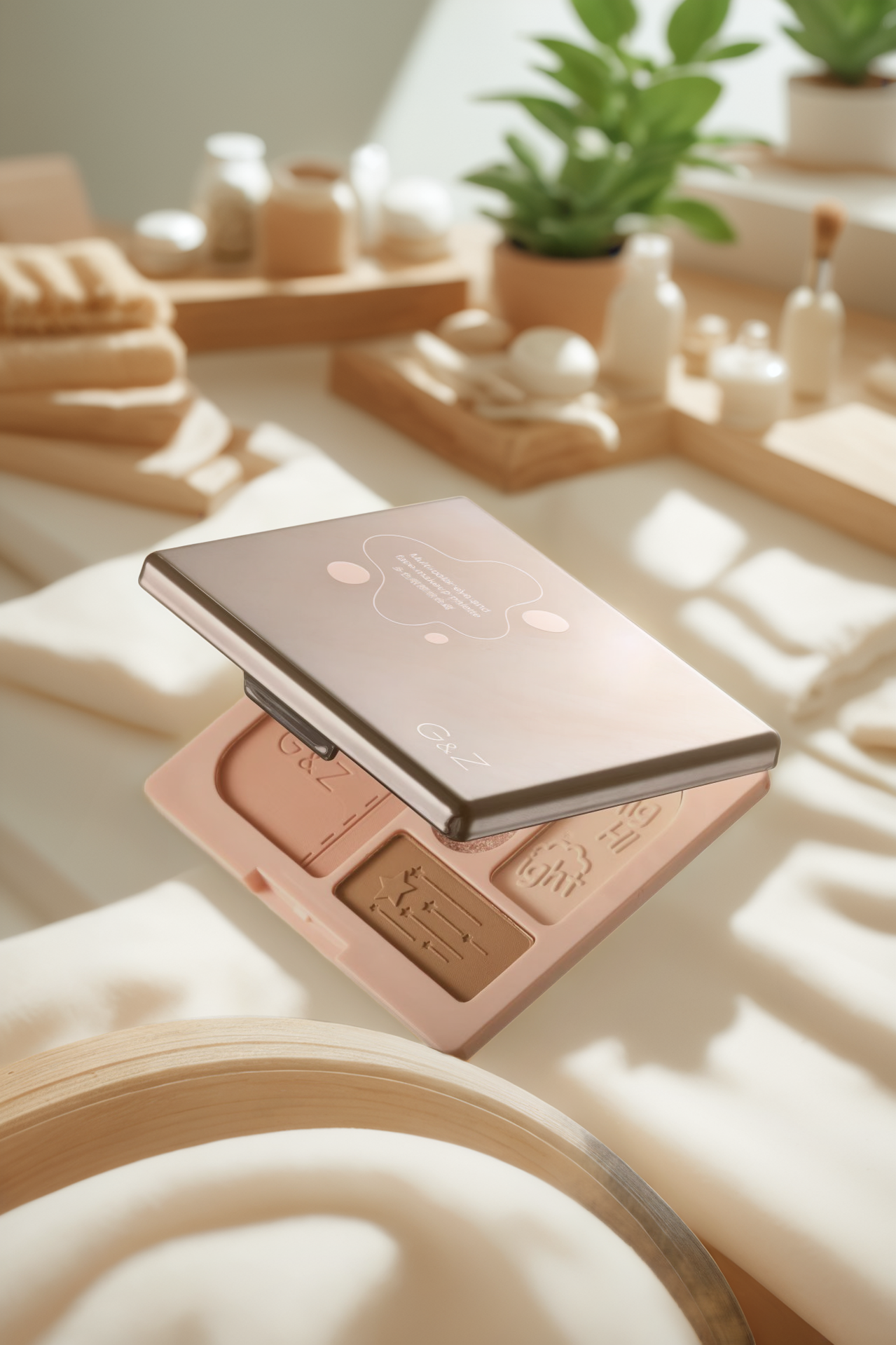The Art and Science Behind Your Beauty Essentials
The world of beauty is captivating, filled with vibrant colors, luxurious textures, and transformative products that empower individuals to express themselves. But have you ever paused to consider the intricate journey these products undertake before they grace your makeup bag? The process of makeup manufacturing is a sophisticated blend of art, science, and precision engineering, ensuring that every lipstick, eyeshadow, or foundation meets the highest standards of quality and safety. It's a field where innovation continuously pushes boundaries, leading to remarkable products like the G&Z Multi-Function Palette, a testament to thoughtful design and advanced production capabilities.
From Concept to Counter: The Cosmetic Production Lifecycle
The creation of any cosmetic item is a multi-stage endeavor, often referred to as cosmetic production. It begins long before any ingredients are mixed, starting with an idea or a market need. Product development teams, including marketers, chemists, and designers, brainstorm new concepts, shades, and functionalities. Once a concept is solidified, the formulation stage begins. Cosmetic chemists meticulously select and combine raw materials – pigments, oils, waxes, emulsifiers, preservatives, and active ingredients – to achieve the desired texture, color payoff, performance, and stability. This stage involves numerous iterations and laboratory trials. Following successful formulation, rigorous testing is conducted, including stability tests, compatibility tests with packaging, and often, consumer panel tests. Once a formulation is finalized and approved, sourcing of high-quality raw materials and packaging components commences. The subsequent phase involves scaling up for mass production, followed by filling, assembling, and labeling, all leading up to the final quality checks before the product is ready for distribution to retailers and consumers.
A Glimpse Inside a Modern Cosmetic Factory
Stepping into a cosmetic factory reveals a world where hygiene, precision, and technology converge. These facilities are often designed with controlled environments, including cleanrooms with specific air filtration and pressure systems, to prevent contamination and ensure product purity. A cosmetic factory is equipped with a range of specialized machinery. Large-scale mixers and homogenizers blend raw materials to create uniform batches. Filling machines accurately dispense products into various containers, whether they are tubes, bottles, jars, or pans. For pressed powders, like eyeshadows or blushes, specialized presses compact the product into its final form. Throughout the factory, quality control checkpoints are integrated into the production line. Workers are typically highly trained in Good Manufacturing Practices (GMP), wearing protective gear to maintain a sterile environment. The layout is often optimized for efficient workflow, from raw material reception to finished goods dispatch, minimizing cross-contamination risks and maximizing productivity.
Ensuring Excellence: Quality Control and Safety Standards
Quality control (QC) and adherence to safety standards are paramount in makeup manufacturing. Consumers trust that the products they apply to their skin are safe and effective. Regulatory bodies worldwide set stringent guidelines for cosmetic products, covering ingredient safety, labeling accuracy, and manufacturing processes. Companies invest heavily in QC departments that oversee every aspect of production, from inspecting incoming raw materials for purity and compliance to testing in-process batches for consistency and monitoring the finished products for any defects or deviations from specifications. Microbiological testing is crucial to ensure products are free from harmful bacteria and molds. Stability testing under various conditions (temperature, light, humidity) guarantees that the product maintains its quality and efficacy throughout its shelf life. Patch testing or dermatological testing might be conducted to assess potential skin irritation. This rigorous commitment to quality ensures that the end-user receives a product that is not only beautiful but also safe to use.
Innovation Driving the Future of Makeup
The beauty industry is dynamic, constantly propelled by innovation in makeup manufacturing. This includes advancements in ingredient technology, leading to cleaner formulations, more sustainable sourcing, and unique performance characteristics. Packaging innovation is also significant, with a growing emphasis on eco-friendly materials, refillable options, and smart packaging solutions. The G&Z Multi-Function Palette itself is a prime example of innovation, particularly with its chic box cover that doubles as a photo-ready reflective surface, designed to produce stunning picture-perfect moments. This feature, combined with the whimsical embossed designs on the multiple pans, showcases a blend of aesthetic appeal and creative manufacturing. The finely milled powders underscore the precision achievable in modern cosmetic production, catering to seamless application.
The G&Z Multi-Function Palette: A Masterpiece of Design and Production
The G&Z Multi-Function Palette perfectly illustrates the synergy between innovative design and meticulous cosmetic production. Its standout chic box cover isn't just visually appealing with its minimalist, modern vibe; its reflective quality is a thoughtful manufacturing detail catering to contemporary needs like social media sharing. Inside, the palette reveals multiple pans, each embossed with intricate designs like celestial stars and dreamy cloud-like motifs. This level of detail in the embossing process requires precise molds and careful pressing techniques within the cosmetic factory. The soft pink casing exudes femininity, while the patterns elevate its artistic allure. Functionally, the shades are designed for versatility—sculpting, highlighting, and creating warm, earthy tones. The powders are finely milled, a hallmark of quality makeup manufacturing processes that focus on particle size reduction for smooth application and a superior finish. This compact palette isn't merely a collection of makeup; it’s a statement piece that elevates everyday routines, embodying how excellent cosmetic production brings visionary designs to life. From the pigment selection to the pressing of powders and the assembly of the unique casing, every step reflects a commitment to quality.
Choosing the Ideal Manufacturing Partner
For beauty brands, particularly new or indie brands, selecting the right manufacturing partner is a critical decision. This involves finding a cosmetic factory that not only has the technical capabilities and capacity to produce the desired products but also aligns with the brand's values regarding quality, ethics, and sustainability. Factors to consider include their certifications (like GMP), experience with similar product types, flexibility in production volumes, and transparency in their supply chain and manufacturing processes. A good partner in makeup manufacturing acts as an extension of the brand, contributing to its success through reliable and high-quality output.
The Enduring Allure of Well-Crafted Cosmetics
In conclusion, the journey from raw ingredients to the sophisticated beauty products we use daily is a testament to the intricate and evolving field of makeup manufacturing. It's an industry that demands scientific knowledge, technological prowess, artistic vision, and an unwavering commitment to quality and safety. Innovations continue to shape its future, enhancing not just the products themselves but also the user experience, as seen in thoughtfully designed items like the G&Z Multi-Function Palette. The next time you admire a perfectly pressed powder or a beautifully packaged lipstick, remember the complex cosmetic production processes and dedicated expertise that brought it into existence, making beauty more than just skin deep.






